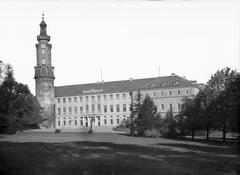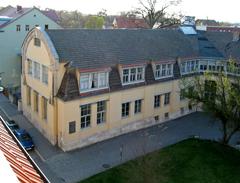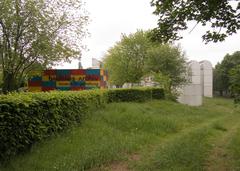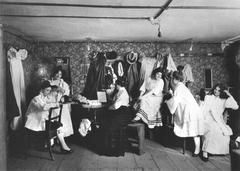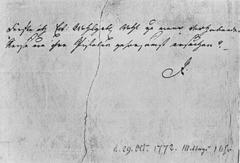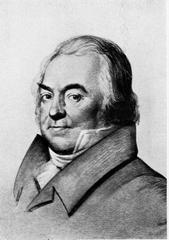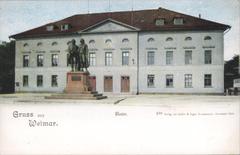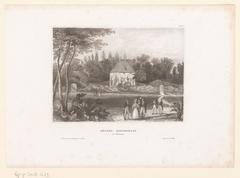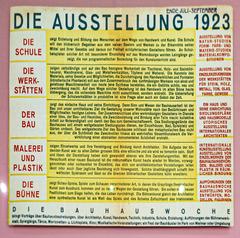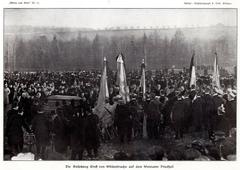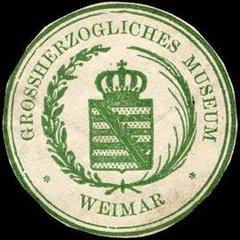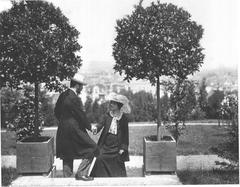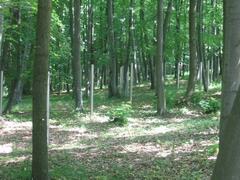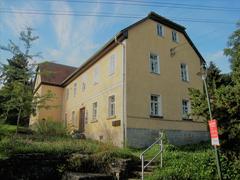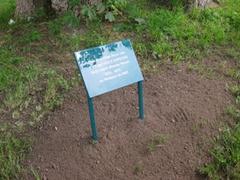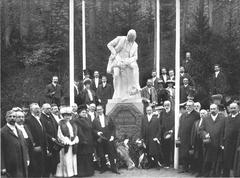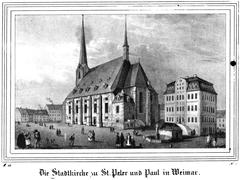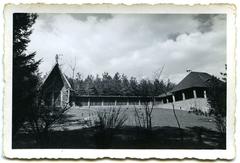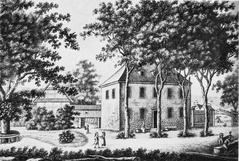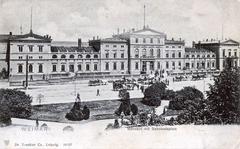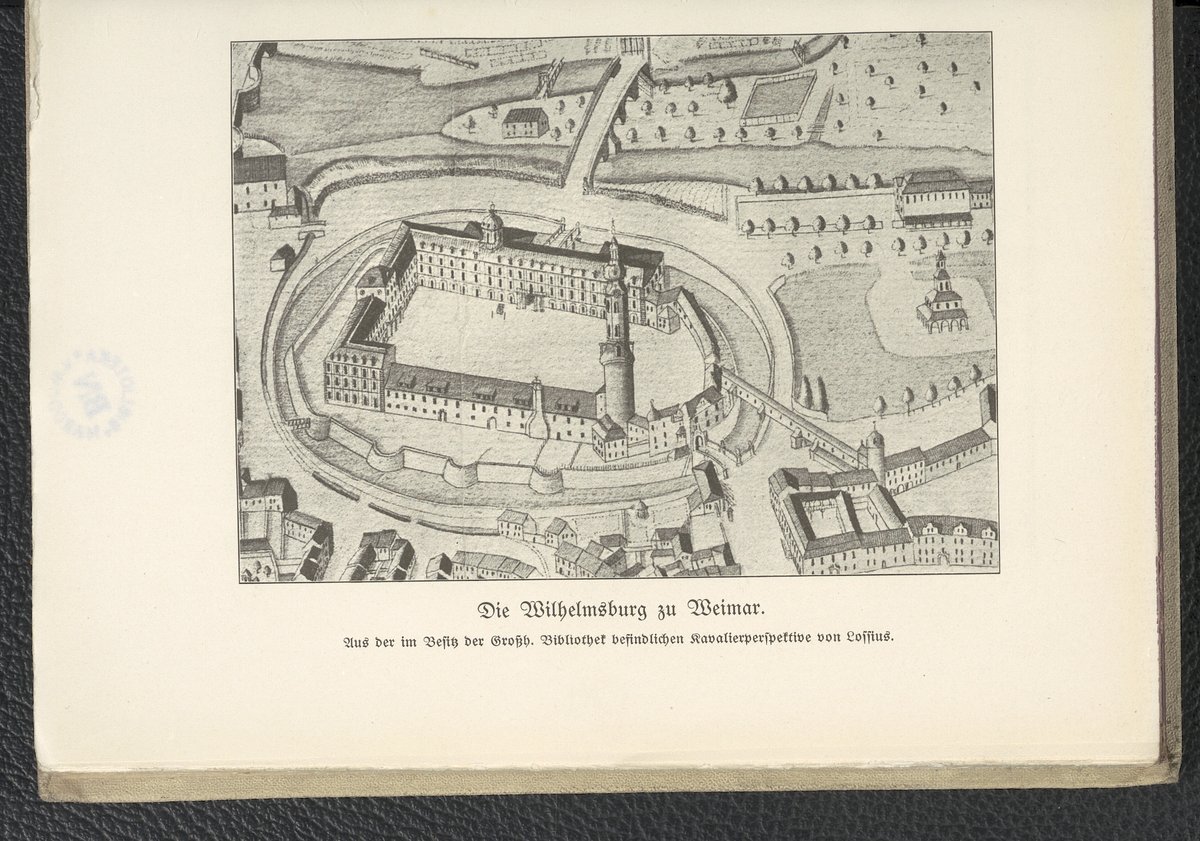
Schloss Weimar Visiting Hours, Tickets, and History Guide
Date: 14/06/2025
Introduction to Schloss Weimar and Its Significance
Schloss Weimar, also known as the Stadtschloss or Weimar City Castle, is a monumental testament to German cultural history and the architectural evolution of Thuringia. Originally established as a medieval fortress in the late 10th century, the castle has undergone multiple transformations—Renaissance, Baroque, and Neoclassical—mirroring the dynamic political, cultural, and artistic shifts in the region (Klassik Stiftung Weimar). More than a historical structure, Schloss Weimar is a vibrant cultural hub, intimately connected to the flowering of Weimar Classicism and the intellectual legacy of figures like Duchess Anna Amalia, Duke Carl August, Johann Wolfgang von Goethe, and Friedrich Schiller (UNESCO World Heritage, Spotting History).
Visitors today can explore the castle’s layered past, from fortified medieval beginnings to its neoclassical redesign that reflects Enlightenment ideals. The interiors feature the restored Dichterzimmer (Poets’ Rooms), the renowned Schlosskapelle (Castle Chapel), and extensive art collections, all integrated with the UNESCO-listed Park an der Ilm, exemplifying harmony between architecture and nature (Klassik Stiftung Weimar, PlanetWare).
With ongoing restoration projects, Schloss Weimar continues to serve as a focal point for cultural events, exhibitions, and musical performances. This guide provides essential information on visiting hours, tickets, accessibility, and travel tips to help you plan your visit to this cultural landmark (destinationtheworld.co, Tall Girl Big World).
Table of Contents
- Introduction
- Historical Overview
- Architectural Evolution and Styles
- Interior Highlights and Artistic Treasures
- Exterior Features and Park Integration
- Visiting Schloss Weimar: Practical Information
- Weimar Classicism, Bauhaus, and Cultural Context
- Integration with Other Cultural Sites
- Frequently Asked Questions (FAQ)
- Visual and Interactive Elements
- Cultural Etiquette and Local Customs
- Planning Your Visit
- Explore More and Stay Connected
- Summary and Visitor Recommendations
- Sources
Historical Overview
Early Origins and Medieval Foundations
Schloss Weimar’s origins trace back to the late 10th century, where it began as a moated fortress on the Ilm River (Klassik Stiftung Weimar). Over time, it became the seat of the Ernestine branch of the Wettin dynasty and evolved from a defensive stronghold to a ducal residence, especially after a significant fire in 1424 led to extensive rebuilding (Spotting History).
Renaissance and Baroque Transformations
A catastrophic fire in 1618 necessitated Renaissance and Baroque reconstructions, notably under Italian architect Giovanni Bonalino and later Johann Moritz Richter, who introduced the symmetrical three-winged Baroque layout. The completion of the Schlosskapelle in 1630 established the castle as a center for court music and culture (Spotting History, Klassik Stiftung Weimar).
Catastrophe and Enlightenment: The 18th Century
Another devastating fire in 1774 led to a Neoclassical redesign. Under Duke Carl August and the guidance of Goethe, the castle was rebuilt to reflect the ideals of Weimar Classicism—rationality, balance, and a celebration of the arts (UNESCO World Heritage).
The Heart of Weimar Classicism
Schloss Weimar became the cultural nucleus of Weimar Classicism, hosting the likes of Goethe, Schiller, Herder, and Wieland. The castle’s status as a meeting place for the intellectual elite is reflected in its interiors, particularly the Poet Rooms and the music-filled Schlosskapelle (UNESCO Arts & Culture).
19th and Early 20th Century Developments
The west wing was completed in 1834 and the south wing in the early 20th century, fully enclosing the courtyard. Following the end of the monarchy in 1918, the castle became the Schlossmuseum, displaying both art and Weimar’s cultural legacy (Klassik Stiftung Weimar, Spotting History).
Recent History and Ongoing Restoration
Closed for major restoration in 2018, Schloss Weimar’s renovations aim to preserve its historical fabric and expand its function as a museum and event venue. The first phase is expected to conclude in 2026, with full completion by 2030. Select areas, including the castle chapel and Poet Rooms, are currently accessible via guided tours (Klassik Stiftung Weimar).
Architectural Evolution and Styles
Medieval to Baroque
The original fortress foundations remain visible in the substructure and moat remnants (Klassik Stiftung Weimar). Extensive Baroque expansions in the 16th and 17th centuries resulted in a three-winged palace with grand symmetrical facades (Wikipedia).
Neoclassical Redesign
The 18th-century fire led to a refined neoclassical style, realized under Goethe’s supervision and architects Johann August Arens and Nicolaus Friedrich Thouret. Features include the elegant grand staircase, harmonious proportions, and restrained ornamentation (Klassik Stiftung Weimar). The south wing, added in the early 20th century, seamlessly integrates with the historical structure.
19th and 20th Century Additions
Later modifications introduced subtle historicist elements, while maintaining the castle’s classical essence. The four-winged layout and integration with Park an der Ilm create a striking example of landscape-architecture harmony (miamijaialai.org).
Interior Highlights and Artistic Treasures
Dichterzimmer (Poets’ Rooms)
These rooms celebrate Weimar’s literary heritage, featuring period furnishings, manuscripts, and portraits of Goethe, Schiller, and contemporaries (Klassik Stiftung Weimar).
Schlosskapelle (Castle Chapel)
Renowned for its neoclassical elegance and acoustics, the chapel hosts concerts and cultural events, continuing the castle’s musical legacy (Klassik Stiftung Weimar).
Grand Staircase and State Rooms
The grand staircase is a neoclassical highlight, complemented by state rooms adorned with stucco, gilded mirrors, and period furniture (Klassik Stiftung Weimar).
Art Collections
The castle houses the Klassik Stiftung Weimar’s primary art collection, including works by Lucas Cranach the Elder, Caspar David Friedrich, and Max Beckmann, alongside decorative arts and ducal artifacts (Klassik Stiftung Weimar).
Exterior Features and Park Integration
Facades and Courtyards
Baroque and neoclassical facades, ceremonial courtyards, and a central tower characterize Schloss Weimar’s external appearance (Wikipedia).
Park an der Ilm
Adjacent to the castle, this English-style landscape park is an integral part of the UNESCO site, featuring pavilions, sculptures, and Goethe’s Garden House (PlanetWare).
Visiting Schloss Weimar: Practical Information
Visiting Hours
- Typically open Tuesday to Sunday, 10:00 AM to 6:00 PM (or 5:00 PM off-season).
- Closed Mondays and on select public holidays.
- Always confirm current hours on the official website.
Tickets and Prices
- Standard adult: €10
- Reduced (students/seniors): €7
- Children under 18: Free
- Family and group discounts available.
- Weimar Card includes Schloss Weimar and other cultural sites.
- Tickets can be purchased online or at the entrance (klassik-stiftung.de).
Accessibility
- Wheelchair accessible with ramps and elevators; some historic areas may have limited access.
- For specific needs, consult accessibility info.
Guided Tours and Events
- Guided tours are available daily, primarily in German; English tours are offered seasonally.
- Special events, concerts, and exhibitions occur throughout the year (event calendar).
Facilities
- Restrooms, cloakrooms, and a museum shop on-site.
- Photography is allowed in most areas, but restrictions apply in some rooms.
Travel Tips
- Visit in late spring or early fall for mild weather and fewer crowds (duckexplore.com).
- Combine your visit with nearby attractions like the Duchess Anna Amalia Library, Goethe House, and Bauhaus Museum (klassik-stiftung.de).
- Book guided tours and tickets in advance during peak seasons.
Weimar Classicism, Bauhaus, and Cultural Context
Schloss Weimar was the intellectual and artistic heart of Weimar Classicism, hosting luminaries who shaped German and European culture. The castle’s legacy set the stage for modernist innovation, including the founding of the Bauhaus in Weimar (miamijaialai.org, PlanetWare).
Integration with Other Cultural Sites
Schloss Weimar is part of the UNESCO “Classical Weimar” ensemble, alongside the Goethe House, Schiller’s Residence, Duchess Anna Amalia Library, and Wittumspalais, collectively illustrating the city’s unparalleled cultural significance (UNESCO).
Frequently Asked Questions (FAQ)
Q: What are Schloss Weimar’s opening hours?
A: Generally Tuesday to Sunday, 10:00 AM–6:00 PM (seasonally until 5:00 PM). Closed Mondays. Check the official website for updates.
Q: How much do tickets cost?
A: Standard adult tickets are €10; reductions and family tickets are available. The Weimar Card offers access to multiple sites.
Q: Are guided tours available?
A: Yes, in German and often in English. Booking ahead is recommended.
Q: Is Schloss Weimar accessible for visitors with disabilities?
A: Wheelchair access is provided; check accessibility details for specifics.
Q: Can I take photos inside the castle?
A: Yes, in most areas, but restrictions apply in special exhibitions.
Visual and Interactive Elements
- Explore virtual tours and galleries on the Klassik Stiftung Weimar website.
- Suggested alt texts for images: “Schloss Weimar exterior view,” “Schloss Weimar tickets counter,” “Weimar historical sites interior.”
- Interactive maps and multimedia guides are available online.
Cultural Etiquette and Local Customs
- Greet staff with “Guten Tag.”
- Maintain respectful behavior in galleries and historic areas.
- Punctuality is valued for tours and events.
- Enjoy coffee and cake in a nearby café after your visit (duckexplore.com).
Planning Your Visit
- Allow 1.5–2 hours for a thorough visit; longer if joining a guided tour or exploring temporary exhibitions.
- Weimar is walkable from the train station, and local buses connect to the city center (destinationtheworld.co).
- Book online in advance for popular dates and special exhibitions.
Explore More and Stay Connected
- Check related articles on Weimar Classicism and Bauhaus sites.
- Visit the Goethe House and Duchess Anna Amalia Library for a full cultural experience.
- Download the Audiala app for guided audio tours, and follow us on social media for updates and visitor tips.
Summary of Key Points and Visitor Recommendations
Schloss Weimar is an indispensable portal into Germany’s cultural, intellectual, and architectural legacy. From its medieval fortifications to its neoclassical transformation, the castle embodies centuries of history and the lives of Germany’s most eminent figures (UNESCO World Heritage, Spotting History). Its artistic treasures, events, and integration with Park an der Ilm have earned it UNESCO recognition.
With guided tours, musical events, and ongoing restoration efforts, Schloss Weimar offers a curated and accessible visitor experience (Klassik Stiftung Weimar). It is an ideal starting point for exploring Weimar’s broader UNESCO-listed ensemble, offering an immersive journey through Enlightenment, Classicism, and modernist innovation (PlanetWare, Tall Girl Big World).
For an enhanced experience, download the Audiala app for guided audio tours and explore related cultural posts. Schloss Weimar remains a living cultural beacon and a must-see for anyone interested in German heritage (Klassik Stiftung Weimar).
Sources
- Klassik Stiftung Weimar
- Klassik Stiftung Weimar: Stadtschloss
- Tall Girl Big World
- destinationtheworld.co
- UNESCO World Heritage
- Spotting History
- miamijaialai.org
- duckexplore.com
- Wikipedia
- whichmuseum.com
- PlanetWare

